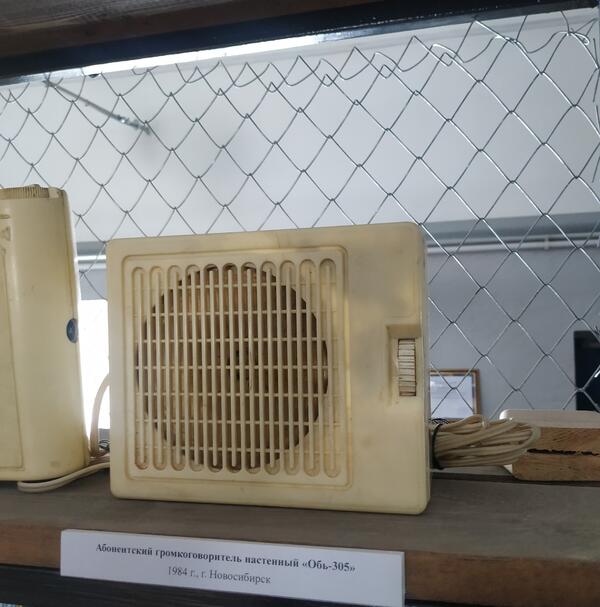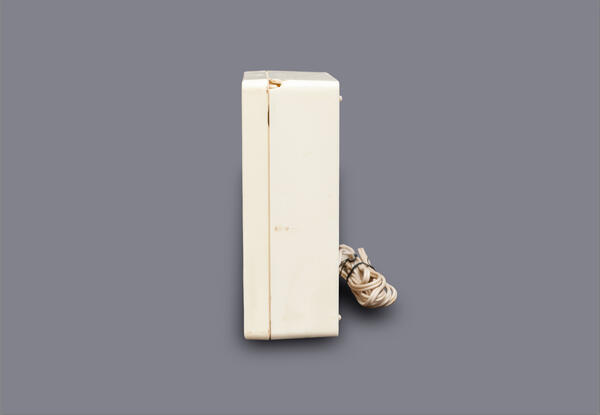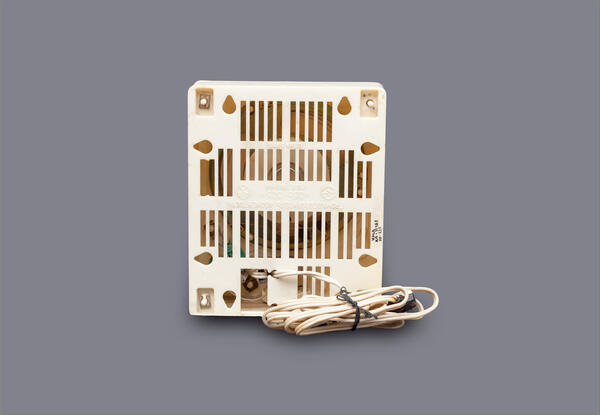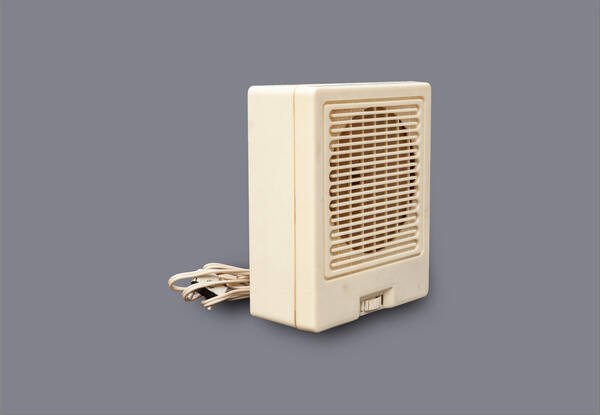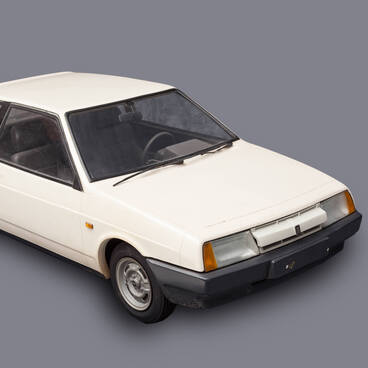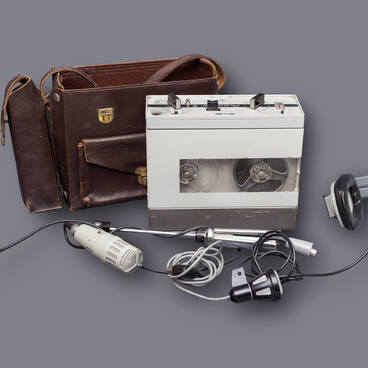The Novosibirsk Low-Voltage Equipment Factory was developed based on factory No. 188, which had supplied products for the front needs during the war. Back in 1941, Novosibirsk became one of the places chosen for evacuated equipment, specialists, and their families. It was there that 7.62- and 12.7-mm cartridges were produced. In the post-war years, the factory started making consumer goods including a variety of electrical appliances.
Factory No. 188 was renamed in 1966. In the 1970s, the factory was actively developing, and by the mid-1980s, the Novosibirsk Low-Voltage Equipment Factory had become one of the industry’s most advanced. In 1984, the factory began to manufacture the Ob-305 subscriber loudspeaker.
The device was designed to reproduce the transmissions of a low-frequency channel of the local wire broadcasting network. The subscriber loudspeaker was commonly (though incorrectly) known as a radio point or a reproducer. The sound frequency range was 160 to 10,000 Hz. The loudspeaker weighed 0.75 kg.
The country’s vast territory, combined with the high cost and scarcity of radio equipment, and the need for high power and energy consumption for long-wave radio broadcasting, made the wireless radio inaccessible to many Soviet citizens. All that predetermined the development of wire broadcasting.
Subscriber loudspeakers were reliable, easy to make, and extremely cheap. In the Soviet Union, wire broadcasting receivers began to be installed in homes in 1925. During the Great Patriotic War, wire broadcasting was widely used to warn the population about impending air raids.
In September 1991, Radio of Russia started broadcasting on the first of the speaker’s three buttons, Radio Mayak was still available on the second button, and Radio-1, on the third one. On August 4, 1997, private radio companies started broadcasting on the 120 kHz frequency. As the upkeep of wire broadcasting became too costly in rural areas, the subscription fees began to grow, and the wire radio broadcasting network was gradually shrinking.
As of 2021, wire radio broadcasting was still accessible in 54 constituent entities of the Russian Federation, though on a much smaller scale. Today, the number of subscribers is just under 1.5 million.
Factory No. 188 was renamed in 1966. In the 1970s, the factory was actively developing, and by the mid-1980s, the Novosibirsk Low-Voltage Equipment Factory had become one of the industry’s most advanced. In 1984, the factory began to manufacture the Ob-305 subscriber loudspeaker.
The device was designed to reproduce the transmissions of a low-frequency channel of the local wire broadcasting network. The subscriber loudspeaker was commonly (though incorrectly) known as a radio point or a reproducer. The sound frequency range was 160 to 10,000 Hz. The loudspeaker weighed 0.75 kg.
The country’s vast territory, combined with the high cost and scarcity of radio equipment, and the need for high power and energy consumption for long-wave radio broadcasting, made the wireless radio inaccessible to many Soviet citizens. All that predetermined the development of wire broadcasting.
Subscriber loudspeakers were reliable, easy to make, and extremely cheap. In the Soviet Union, wire broadcasting receivers began to be installed in homes in 1925. During the Great Patriotic War, wire broadcasting was widely used to warn the population about impending air raids.
In September 1991, Radio of Russia started broadcasting on the first of the speaker’s three buttons, Radio Mayak was still available on the second button, and Radio-1, on the third one. On August 4, 1997, private radio companies started broadcasting on the 120 kHz frequency. As the upkeep of wire broadcasting became too costly in rural areas, the subscription fees began to grow, and the wire radio broadcasting network was gradually shrinking.
As of 2021, wire radio broadcasting was still accessible in 54 constituent entities of the Russian Federation, though on a much smaller scale. Today, the number of subscribers is just under 1.5 million.

